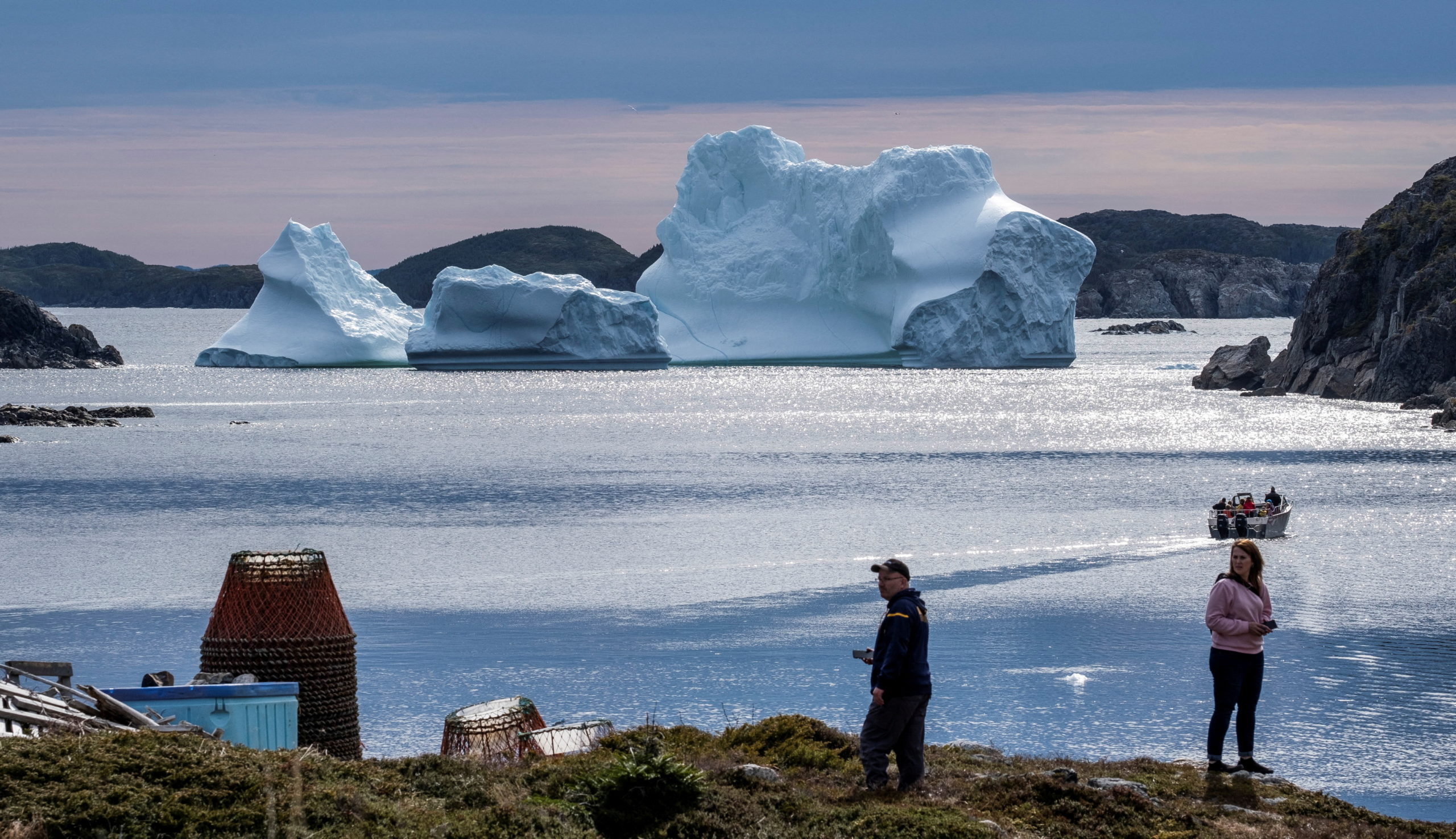What are Strange but not well-known facts about Canadian Immigration

Strange Stories Amazing facts Canada
Here are some strange but not well-known facts about Canadian immigration:
“War Brides” and “Fiancées”:

After World War II, Canada welcomed thousands of “war brides” and “war fiancées” from Europe. These were foreign women who had married Canadian soldiers during the war. The Canadian government arranged for their transportation and provided them with assistance to integrate into Canadian society.
Paperclip Test:

During the early 20th century, Canadian immigration officers used a peculiar test known as the “paperclip test” to determine if immigrants were mentally fit. They would ask applicants to disassemble and then reassemble a paperclip. This practice was eventually abandoned due to its subjective nature.
“Home Children” Program:

Between 1869 and the late 1930s, around 100,000 British children, known as “home children,” were sent to Canada as part of a migration scheme. These children, often from disadvantaged backgrounds, were sent to work as domestic servants or farm laborers. Many faced hardships and were separated from their families.

Nunavut, a territory in northern Canada, has a distinct immigration policy. In an effort to preserve Inuit culture and ensure sustainable economic development, Nunavut gives priority to applicants who have a strong connection to the territory or who can contribute to its growth in areas such as education, healthcare, and resource management.
Head Tax on Chinese Immigrants:

From 1885 to 1923, the Canadian government imposed a head tax on Chinese immigrants entering the country. The tax started at $50 in 1885 and increased to $500 in 1903, making it difficult for Chinese immigrants to bring their families to Canada. The head tax was repealed in 1923, but it had lasting effects on the Chinese Canadian community.
Komagata Maru Incident:

In 1914, the Komagata Maru, a ship carrying 376 passengers, mostly Sikh immigrants from India, arrived in Vancouver. However, Canadian authorities refused entry to most of the passengers due to discriminatory immigration policies. After a two-month standoff, the ship was forced to return to India, where some passengers faced arrest and violence upon arrival.
The Komagata Maru Apology:
In 2008, the Canadian government formally apologized for the Komagata Maru incident, acknowledging the historical injustice inflicted on the Sikh passengers. The Prime Minister at the time, Stephen Harper, delivered the apology in the House of Commons and emphasized the importance of learning from past mistakes to build a more inclusive society. This apology makes Canada as one of the few countries broad enough to apologize publicly for its mistakes while many nations dither.
The Canadian Immigration Hall of Fame:

The Canadian Immigration Hall of Fame, established in 1993, recognizes individuals who have made significant contributions to the cultural, social, or economic enrichment of Canada through immigration. Inductees include notable figures from various fields, such as science, arts, politics, and sports, who have made a positive impact on Canadian society.
Ghost Immigration Offices:

In the early 20th century, Canada had “ghost immigration offices” in Europe. These offices were set up to deter potential immigrants and create a perception of strict immigration control. However, the offices had no real authority and were intended to dissuade individuals from pursuing Canadian immigration by providing misleading information or unnecessary bureaucratic hurdles.
“Brain Drain” from Canada:
While often discussed in the context of developing countries, Canada has also experienced a “brain drain” phenomenon. Many highly skilled Canadian professionals, particularly in the healthcare and technology sectors, have emigrated to the United States or other countries in search of better career opportunities and higher salaries.
War Measures Act and Japanese Canadians:

During World War II, the Canadian government invoked the War Measures Act, resulting in the forced relocation and internment of Japanese Canadians. Approximately 22,000 Japanese Canadians, the majority of whom were Canadian citizens, were uprooted from their homes and sent to internment camps. Their properties and possessions were confiscated, and they faced discrimination and loss of livelihood.
Underground Railroad for enslaved African Americans:

Canada played a crucial role in the Underground Railroad, a network of secret routes and safe houses used by enslaved African Americans to escape to free states and Canada in the 19th century. Thousands of freedom seekers found refuge in Canada, particularly in Ontario and Nova Scotia, where they established vibrant communities.
Maple Leaf Country:

Did you know that Canada is known as the “Maple Leaf Country”? The iconic maple leaf symbol is widely associated with Canada and is prominently featured on the country’s flag. Its significance goes beyond national pride and serves as a symbol of unity and diversity, representing the multicultural fabric of Canadian society.
Multilingual Nation:
Canada is recognized as one of the most multilingual countries in the world. While English and French are the official languages, over 200 languages are spoken across the country, reflecting its rich linguistic diversity. This multiculturalism is celebrated and supported by various language programs and services.
Polar Bear Capital:

Churchill, a town located in Manitoba, holds the title of the “Polar Bear Capital of the World.” It is a popular destination for wildlife enthusiasts who want to observe polar bears in their natural habitat. The town’s unique location near the Arctic makes it an ideal spot for these incredible creatures to gather.
UFO Landing Pad:
In St. Paul, Alberta, you can find an unusual attraction—a UFO landing pad. Built in 1967, it was intended to serve as a symbol of goodwill and as a tourist attraction. Although no extraterrestrial landings have been reported, the site continues to draw visitors curious about the mysteries of the universe.
Iceberg Alley:

Newfoundland and Labrador, the easternmost province of Canada, is famous for its stunning natural beauty. One of its remarkable features is “Iceberg Alley,” a stretch of coastline where majestic icebergs from the Arctic float past each year. This awe-inspiring sight attracts photographers, nature enthusiasts, and adventurers alike.
Giant Nickel:

Sudbury, Ontario, is home to a massive landmark—the “Big Nickel.” Standing at 9 meters tall, it is the world’s largest coin. The Big Nickel pays homage to Sudbury’s rich mining heritage and serves as a reminder of the region’s significant contributions to Canada’s economy.
Skilled Immigrant Success Stories:
Canada has a long history of welcoming skilled immigrants who have made significant contributions to various fields. From scientists and Nobel laureates to successful entrepreneurs and artists, numerous skilled immigrants have achieved remarkable success in Canada. These inspiring stories showcase the opportunities and potential that immigration to Canada offers.
Beautiful National Parks:
Canada boasts breathtaking national parks that attract nature lovers from around the globe. From the stunning landscapes of Banff and Jasper National Parks in the Rocky Mountains to the rugged coastal beauty of Pacific Rim National Park in British Columbia, these protected areas offer unforgettable experiences for outdoor enthusiasts.
Despite high costs and a low employment rate, Canada continues to attract people for various reasons. Here are some interesting facts that contribute to Canada’s appeal:
Quality of life:
Canada consistently ranks among the top countries in terms of quality of life. It offers a safe and peaceful environment, high standard of living, excellent healthcare, and well-developed social welfare systems.

 Launch Your Dreams: A Guide to Canada’s Start-Up Visa Program for Global Entrepreneurs
Launch Your Dreams: A Guide to Canada’s Start-Up Visa Program for Global Entrepreneurs  Options for Immigrating to Canada as a Healthcare Worker- Best Canadian Provinces that offer good salaries
Options for Immigrating to Canada as a Healthcare Worker- Best Canadian Provinces that offer good salaries  Immigrating to Quebec province Canada- Professions in demand with salaries- Racial Discrimination
Immigrating to Quebec province Canada- Professions in demand with salaries- Racial Discrimination  H1B Visa- Eligibility Requirements- its Duration- Process to apply and Professions in demand
H1B Visa- Eligibility Requirements- its Duration- Process to apply and Professions in demand  Who can sponsor someone for Canada Visa and eligibility requirements to get sponsored for Canada Visa
Who can sponsor someone for Canada Visa and eligibility requirements to get sponsored for Canada Visa  Detailed guide for New International Students coming to Canada:
Detailed guide for New International Students coming to Canada:  Recent Changes to Canada’s Temporary Foreign Worker Program (TFWP) Effective May 1, 2024
Recent Changes to Canada’s Temporary Foreign Worker Program (TFWP) Effective May 1, 2024  Immigration Process to Latvia and Job Prospects
Immigration Process to Latvia and Job Prospects  Notario Fraud- a rampant fraudulent practice trapping immigrants to US and Canada
Notario Fraud- a rampant fraudulent practice trapping immigrants to US and Canada